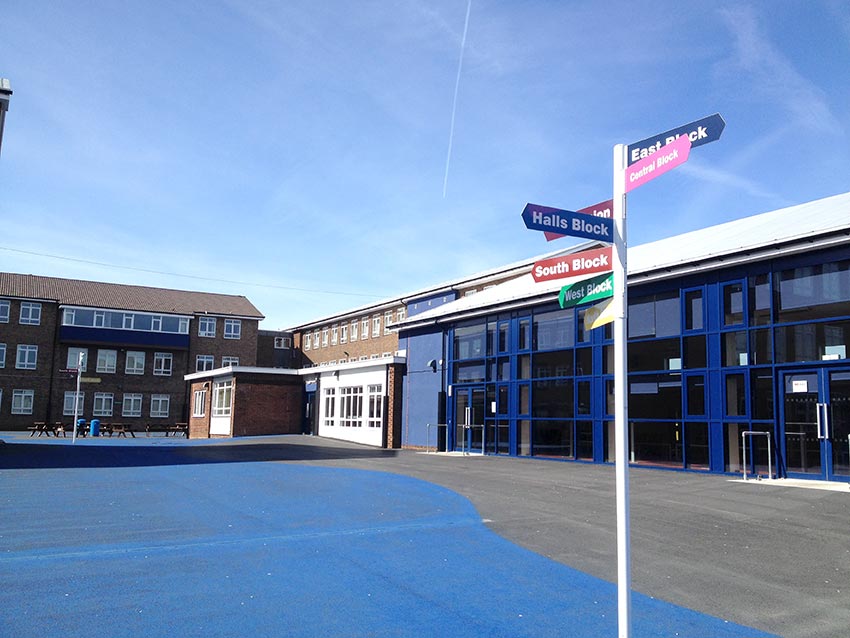G&H Group’s Pre-Construction Director, David Davis, explains how delivering mechanical and electrical (M&E) services in live education facilities presents a host of unique challenges.
Introduction
A clear strategy is vital as is specialist knowledge and understanding. While all the usual health and safety considerations are needed when working on-site, adding pupils, teachers and term times presents completely different implications to be factored into the planning process. Live environments such as schools require far greater levels of management and communication with both the main contractor and client team. Programmes are usually tight to ensure the curriculum is not affected yet at the same time, invasive works have to be carried out during the limited school holiday periods. There are also a number steps that need to be taken before you arrive on site to meet government legislation which differ from everyday contracts.
Get vetted
Before you begin, your workforce, including office staff have to comply with the Department for Education’s Keeping Children Safe in Education regulations and must be checked under the Disclosure and Barring Service – the new name for the Criminal Records Bureau. One of the key elements of the regulations involves what is and isn’t permissible when working in an environment close to pupils. For example, engineers and operatives may be walking between work areas in corridors where pupils and students may be present yet they are not allowed to communicate with them. This can be a hard and unnatural thing to manage especially if pupils are showing a keen interest in the work or conversely the students can be rude to operatives to generate a reaction but this has to be ignored.
The right psychology
Given this somewhat unusual scenario, it is vital management spends time explaining to their workforce how projects in education facilities are different. You have to make your staff understand the implications and manage the scenario in a professional manner should it occur. Tool box talks and other training needs to be geared around pupil protection as well as the usual H&S concerns. The psychology of working on school projects can’t be underestimated. Projects are usually lengthy from an M&E perspective and very intense due to the variety of self-imposed deadlines that need to be set given the limited opportunities to access certain areas. As such, this requires a degree of commitment from the workforce. They are going to be needed on-site long before the bell rings at the start of a day, after pupils have gone home and for lengthy periods over weekends. A further consideration is that operatives will need to work during the school holidays which is when they may want to be having a break with their own children. This is a demanding task when large projects can last from 18 months to two years.
Learn the school rules
Maximising the opportunity to access classrooms and staff rooms that are not available during term time requires close and regular liaison with the school and main contractor to ensure that other planned works do not clash during these limited windows of opportunity. Each school, college or university has different rules for those managing its facilities. In many ways it is like a jigsaw with the various pieces having to be put together to complete the work. The best way of planning the works is to have good, regular communication lines established. When power needs to be decommissioned, this can’t be done when lessons are being taught. Invasive M&E that require access to classroom ceilings or particularly noisy work, for example, can’t take place when there’s a room full of pupils studying, even in adjacent rooms. Equally, there can’t be any downtime so detailed planning and regular analysis of progress is required. Plans need to be refined and revised at daily meetings.
Do your homework
The importance of surveying the existing systems cannot be underestimated as some of the facilities may not have accurate or up-to-date records and may well need bringing in line with current legislation prior to being modified. Being aware of this at the outset makes a significant difference to the whole operation from a time and cost perspective as enabling works may need to be undertaken which have not been anticipated. If you start uncovering antiquated systems on a refurbishment project, you and the client are going to be in for a nasty financial surprise because on certain systems you can become liable as you will “own” the system. This can have huge implications. Projects will overrun and therefore put your timetable out of sync; the workforce you’ve assigned to your next job won’t be available at the envisaged time; and, there will be an increase in labour costs needed to cover the extra work.
Logistical challenges
Complex schemes involving new build and the refurbishment of existing premises provide differing logistical challenges. Meticulously-planned just in time delivery is vital to getting materials on-site at the right moment without disrupting other contractors or the school itself as the storage areas are generally limited due to site restrictions. Once again, regular liaison with all parties is crucial. You need to know the access you have, when it’s available and how long for. It’s important to factor in some time for other contractors in case their work overruns and always have a plan B to make sure there’s no downtime. And of course remember in early morning and mid-afternoon there will be a huge number of buses and cars on-site; staff arriving and leaving work and parents dropping off and collecting their children, so maintaining clear access in and around the school’s road infrastructure is vital.
Specialist equipment
Whilst the equipment on school sites is the same as normal sites, allowance has to be made for more storage areas and secure tool vaults to avoid any tools to be left unattended. Normal site barriers have to be full height non-vision to discourage students from entering the workspace. The use of battery powered hand tools is best practice as it reduces the need for trailing power leads around the site.











